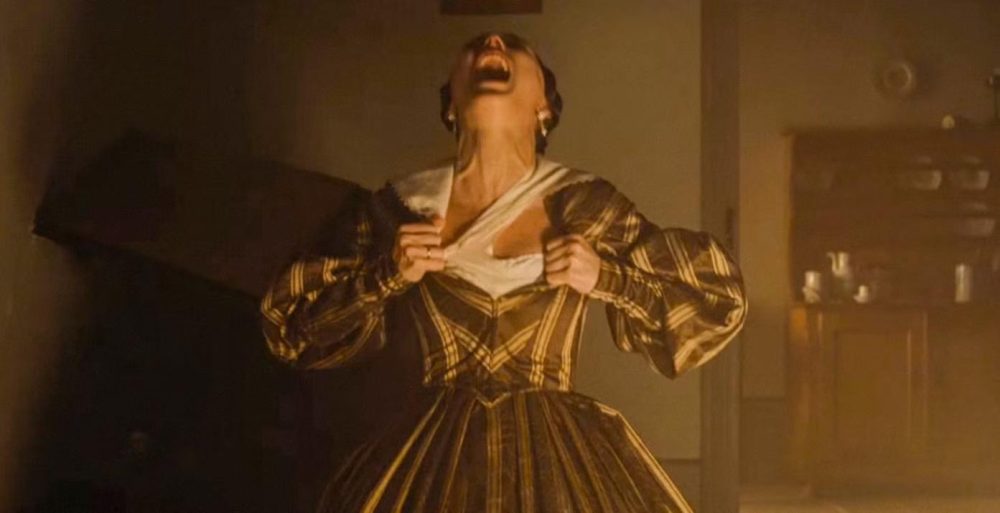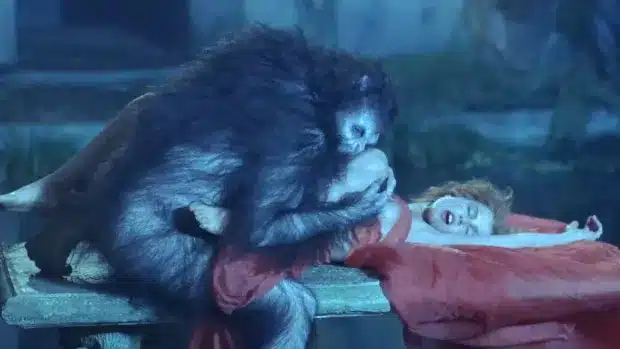
Vampires represent a very scary and forbidden kind of romance. Regardless of how handsome they may be, they’re still viciously violent creatures that love to possess and control their victims. They have a thirst that is impossible to satiate, one that demands an eternity of murder to guarantee their continued existence; they can only do all this killing at night, putting a damper on the possibility of long walks on the beach and Springtime picnics; and, If that wasn’t enough, they tend to be torturously afflicted by the loss of their soulmates, their one true loves. But romance is never perpetually dormant. Classic vampires cut from the same cloth as Dracula, for instance, find a new lease on it in the form of a woman that reminds them of the one that time and circumstance stole from them. And then, the macabre courting process begins.
This is how Francis Ford Coppola built up his version of the classic vampire in his 1992 film Bram Stoker’s Dracula. Starting Gary Oldman as Dracula and Winona Ryder as his new love Mina, this take on the story turned the titular monster into a sensual force that lived by the movie’s tagline, “Love never dies.” Oldman himself has gone on record saying he accepted the role just to able to say what turned out to be the movie’s most memorable quote: “I’ve crossed oceans of time to find you.”


It’s easy to argue Coppola’s Dracula is the most romantic vampire movie ever made, and a sure-fire hit to get the blood pumping when watching it with that special someone. Recently, though, a new challenger entered the arena, Robert Eggers’ remake of Nosferatu. Eggers goes for a more raw and carnal expression of romance here, though ‘romance’ might not even be the right word for it. In fact, it can even be argued there’s nothing romantic about Nosferatu, that it’s more about how the vampire becomes a stand-in for an abusive ex-boyfriend that doesn’t want to let go of what he had, doing away with the broken-hearted romantic of old that hopes to rediscover those feelings he thought were long cast into oblivion. The defining quote in this case comes from the titular vampire as well: “I am an appetite, nothing more.”
So, it’s Valentine’s Day and you’re torn between the two movies. You want romance, something you can light candles to, or pair well with that bottle of vintage red wine you were saving for the occassion. Does Nosferatu scratch that itch (or start it)? Or is Bram Stoker’s Dracula still king?
The winner here, based on how well-rounded and committed it is to its romantic sensibilities, is Coppola’s Dracula. The movie just knows how to build upon the dangerous and scandalous nature of Mina and Dracula’s relationship. It teases sex when it needs to, infuses it with an ancient sense of evil that keeps the vampire terrifying, and then wraps it all up in a dark shroud of intimacy that pumps a lot of blood into the dark heart that lies at the center of story.


Bram Stoker’s Dracula gets the edge by being fully invested in creating a true romantic horror experience that finds beauty in all the ugliness its vampire authors. As a result, what we get is a kind of tragedy that turns love into a poisonous delicacy that lovers are all too eager to indulge in even if it means becoming an immortal creature that must befriend death in order to live.
Eggers’ Nosferatu dips into Coppola’s Dracula for some of that romance, but it does not give itself entirely to its twisted take on it, thus betraying its potential. Eggers hints at a more ravenous and sexually charged tale of vampirism with his movie, but he doesn’t go far enough to really make it sing. Sure, we see Count Orlok’s penis, and he is made to look like a beautiful corpse that’s decayed with grace, but there’s barely any pushing of boundaries that would really set it apart. And the opportunity for it was there.
The woman Orlok fixates on, Ellen (played by Lily-Rose Depp), is constantly getting telepathically accosted by memories of an intensely carnal phase in her life with him, which means that whatever happened between them was deeply visceral and painful, but also delectably sinful. The madness inherent in that, unfortunately, is relegated to suggestion. For a movie that seems so eager to play around with the attraction of dangerous sex and the idea you’ll be forever haunted by that experience, it’s pretty tame. Plus, the mustache didn’t really help things much.


Had Nosferatu gone deeper into the erotica the trailers hinted at, Bram Stoker’s Dracula would’ve had stiffer competition. For a movie about raw sexual appetite, there’s very little eating. Not enough on the pleasures that left Ellen so scarred. Dracula doesn’t suffer from subtlety in that regard. It lets itself fall freely into romance. It gets at some truly sensual sequences that walk a thin line between genuine love and dark desire. The movie even has a werewolf sex scene that complicates the sexual politics it explores (which are quite varied).
The choice is clear. If you’re looking to set a mood that’ll lead to some of the things that happen in the movie after the credits roll, then Bram Stoker’s Dracula is the absolute winner. Be confident that this choice will potentially inspire some indecent behavior of its own, in a good way. Just make sure you have a safe word if you intend to add biting to the night’s other activities.


Source link




